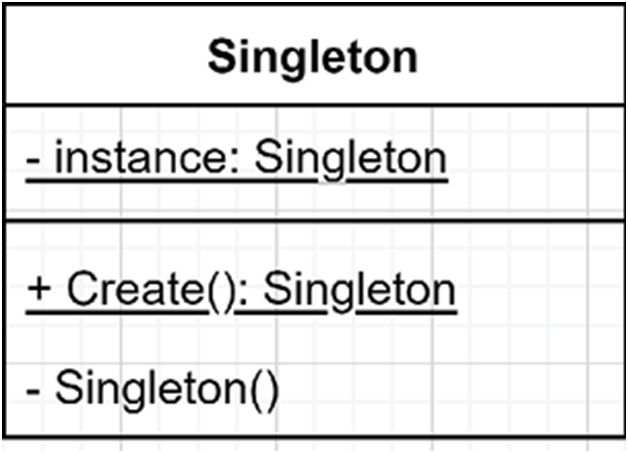The Singleton design pattern allows creating and reusing a single instance of a class. We could use a static class to achieve almost the same goal, but not everything is doable using static classes. For example, a static class can’t implement an interface. We can’t pass an instance of a static class as an argument because there is no instance. We can only use static classes directly, which leads to tight coupling every time.The Singleton pattern in C# is an anti-pattern, and we should rarely use it, if ever, and use dependency injection instead. That said, it is a classic design pattern worth learning to at least avoid implementing it. We explore a better alternative in the next chapter.Here are a few reasons why we are covering this pattern:
- It translates into a singleton scope in the next chapter.
- Without knowing about it, you cannot locate it, try to remove it, or avoid its usage.
- It is a simple pattern to explore.
- It leads to other patterns, such as the Ambient Context pattern.
Goal
The Singleton pattern limits the number of instances of a class to one. Then, the idea is to reuse the same instance subsequently. A singleton encapsulates both the object logic itself and its creational logic. For example, the Singleton pattern could lower the cost of instantiating an object with a large memory footprint since the program instantiates it only once.Can you think of a SOLID principle that gets broken right there?The Singleton pattern promotes that one object must have two responsibilities, breaking the Single Responsibility Principle (SRP). A singleton is the object itself and its own factory.
Design
This design pattern is straightforward and is limited to a single class. Let’s start with a class diagram:

Figure 7.6: Singleton pattern class diagram
The Singleton class is composed of the following:
- A private static field that holds its unique instance.
- A public static Create() method that creates or returns the unique instance.
- A private constructor, so external code cannot instantiate it without passing by the Create method.
You can name the Create() method anything or even get rid of it, as we see in the next example. We could name it GetInstance(), or it could be a static property named Instance or bear any other relevant name.
We can translate the preceding diagram to the following code:
public class MySingleton
{
private static MySingleton?
_instance;
private MySingleton() { }
public static MySingleton Create()
{
_instance ??= new MySingleton();
return _instance;
}
}
The null-coalescing assignment operator ??= assigns the new instance of MySingleton only if the _instance member is null. That line is equivalent to writing the following if statement:
if (_instance == null)
{
_instance = new MySingleton();
}
Before discussing the code more, let’s explore our new class’s behavior. We can see in the following unit test that MySingleton.Create() always returns the same instance as expected:
public class MySingletonTest
{
[Fact]
public void Create_should_always_return_the_same_instance()
{
var first = MySingleton.Create();
var second = MySingleton.Create();
Assert.Same(first, second);
}
}
And voilà! We have a working Singleton pattern, which is extremely simple—probably the most simple design pattern that I can think of.Here is what is happening under the hood:
- The first time that a consumer calls MySingleton.Create(), it creates the first instance of MySingleton. Since the constructor is private, it can only be created from the inside.
- The Create method then persists that first instance to the _instance field for future use.
- When a consumer calls MySingleton.Create() a second time, it returns the _instance field, reusing the class’s previous (and only) instance.
Now that we understand the logic, there is a potential issue with that design: it is not thread-safe. If we want our singleton to be thread-safe, we can lock the instance creation like this:
public class MySingletonWithLock
{
private static readonly object _myLock = new();
private static MySingletonWithLock?
_instance;
private MySingletonWithLock() { }
public static MySingletonWithLock Create()
{
lock (_myLock)
{
_instance ??= new MySingletonWithLock();
}
return _instance;
}
}
In the preceding code, we ensure two threads are not attempting to access the Create method simultaneously to ensure they are not getting different instances. Next, we improve our thread-safe example by making it shorter.